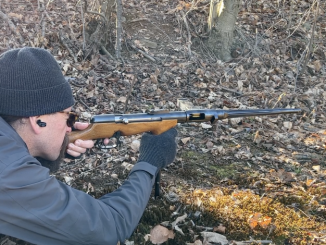Germany established their colony of German South West Africa (Deutsch-Südwestafrika, now Namibia) in 1884, as part of its late attempt to become a colonial power to rival the United Kingdom. The soldiers deployed to protect German interests t here were the Kaiserliche Schutztruppen, and they were few in number and armed with a variety of rifles. Most had Mauser 1871 Jager rifles, single shot black powder arms. The best off, however, were outfitted with new Mauser 98 rifles when the German military adopted the G98. A special batch was made for these colonial troops, with a few distinctive features – a bent bolt handle and sights calibrated down to 200m. And yes – they were used by troops mounted on camels!
When World War One broke out, the fighting in Namibia ended fairly quickly, with the German forces soundly defeated by South Africans under General Jan Smuts in the summer of 1915. Fighting in the other German colonies (especially German East Africa, now Tanzania) would last much longer.
A slight correct to the video: 10,000 of these rifles were actually in German South West Africa by 1908, but 8,000 of them were destroyed by the German forces prior to surrendering in 1915. The German armed force was small, but extra troops had been deployed to the area in response to the Herero Wars in 1904, and they left their rifles behind when they returned to Germany afterwards.



Were any “sporting guns” pressed into service in Africa? I imagine that quite a few personal weapons were used especially when ammunition supplies for regular issue small arms were not guaranteed to be restocked on a regular basis. From my readings lots of weird things happened in the wilderness, including local wildlife making off with the rations. I could be wrong.
“lots of weird things happened in the wilderness”
See Strength section of infobox of Battle of Tanga
https://en.wikipedia.org/wiki/Battle_of_Tanga
A masterpiece of military tactics under command of this officer
https://en.wikipedia.org/wiki/Paul_von_Lettow-Vorbeck
And the British forces had the misfortune of shooting into beehives. The bees stung everyone indiscriminately but the German forces withdrew from the hives more quickly… well, talk about a battle of the bees.
“troops mounted on camels”
It is logical too use beasts of burden suited for given environment, notice that during Great Patriotic War some Soviet units operating beyond in north used reindeer:
https://www.warhistoryonline.com/world-war-ii/reindeer-battalion-wwii-braver-soviets-tougher_tanks.html
though unlike camels they were rather used for towing than as mounts (though it is technically possible to breed mountable reindeer, see: https://worldbuilding.stackexchange.com/questions/45362/the-practicalities-of-riding-an-antlered-stag )
Didn’t the Soviets also have a brigade of camel troops?
“Didn’t the Soviets also have a brigade of camel troops?”
Camels were used, see for example: https://en.wikipedia.org/wiki/Kuznechik_(camel)
however I am not aware of unit using camels and brigade in name
The sight is the original Lange-Visier that the Gewehr 98 was equipped with before the transition to the spitzer round. I am guessing that the update was not performed in Africa. I would also guess that the rifle is not marked with the “s” that rifles updated for the spitzer round were stamped with.
Would be interesting to compare their (camel riding) equipment with the US Camel Corps.
Ian, I hope you’ve read “The Great War In Africa”. You’re in for a treat if you haven’t.
https://images-na.ssl-images-amazon.com/images/I/513c4fSHKkL._SX322_BO1,204,203,200_.jpg
I have that book and found it quite interesting.
Some time when you are in Rock Island you should check out the museum at Rock Island Arsenal and the artillery on display on memorial field. There is an Atomic Anne on display (with out the trucks) and other nice pieces
The attempted resupply of German forces in East Africa via Zeppelin from Bulgaria is one of the most interesting “side episodes” of WWI.
I was told many years ago that the German troops in East Africa by 1918 were armed with captured British and Portuguese weapons as they had run out of 7.92 (8mm) ammunition for their German weapons.
As an interesting aside I have owned three long Portuguese Vergueiro rifles which were still chambered for the original 6.5mm round. These had a South African mark “UDF” for Union Defense Force and it is thought that they had been purchased by the South African Government during WWI from the Portuguese, put into store in 1918 and forgotten!